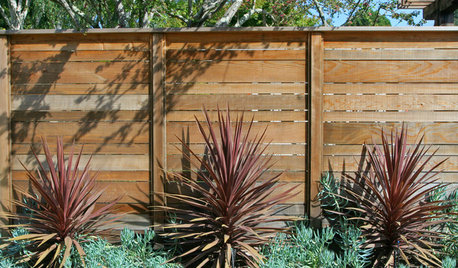Tree Species on the Move?
scotjute Z8
14 years ago
Related Stories

COFFEE WITH AN ARCHITECTClassification of the Design Species
A scientific analysis of the diverse variety of species found in the world of design
Full Story
WINTER GARDENINGHow to Help Your Trees Weather a Storm
Seeing trees safely through winter storms means choosing the right species, siting them carefully and paying attention during the tempests
Full Story
LANDSCAPE DESIGNGet Your Garden Moving for a Magical Mood
Use wind, water and wild creatures to add dimension and life to your landscape
Full Story
GARDENING GUIDESTree Care: Common Tree Diseases and What to Do About Them
Learn to recognize trees that may be affected by diseases or pests so you can quickly take action
Full Story
GARDENING GUIDESHow to Keep Your Trees Healthy
Ensure your trees’ vigor for years to come with these tips for protecting roots, watering effectively and more
Full Story
URBAN GARDENSPlant a Garden That Can Move With You
Think mobile when planning your outdoor space and you can enjoy it wherever you move next
Full Story
FALL GARDENING6 Trees You'll Fall For
Don’t put down that spade! Autumn is the perfect time for planting these trees
Full Story
TREES7 Deer-Resistant Flowering Trees to Plant this Fall
If you live in a neighborhood with roaming deer, consider these beautiful trees that won't tempt hungry guests
Full Story
DECORATING GUIDESPalm Trees Take Interiors on a Tropical Vacation
Conjure a sultry vibe or bring welcome life to modern rooms. Whatever your interior design style, palm trees are the ticket to enhancing it
Full Story
GARDENING GUIDESGreat Design Plant: Cabbage Tree
Happiest in plentiful sun, this tropical-looking tree gives a pool area or backyard landscape an exotic view all summer long
Full StoryMore Discussions










brandon7 TN_zone7
iforgotitsonevermind
Related Professionals
Wrentham Landscape Architects & Landscape Designers · Essex Landscape Architects & Landscape Designers · Grand Haven Landscape Architects & Landscape Designers · Tempe Landscape Contractors · Clayton Landscape Contractors · Fair Oaks Landscape Contractors · Gurnee Landscape Contractors · Longmont Landscape Contractors · Los Banos Landscape Contractors · Snoqualmie Landscape Contractors · Forest Hill Landscape Contractors · Enfield Siding & Exteriors · Poway Siding & Exteriors · Arlington Heights Decks, Patios & Outdoor Enclosures · Crystal Lake Decks, Patios & Outdoor EnclosuresDan _Staley (5b Sunset 2B AHS 7)
bengz6westmd
Fledgeling_
kman04
Dan _Staley (5b Sunset 2B AHS 7)
pineresin
wisconsitom
iforgotitsonevermind
wisconsitom
jqpublic
myrtleoak